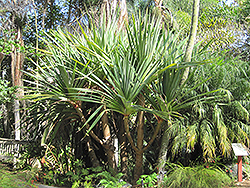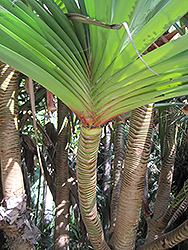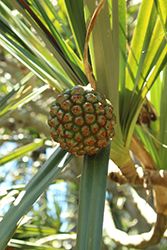Fri & Sat 8am - 8pm
Sun 8am - 7pm
Anytown, USA 12345
fax: 261.787.0463
e-mail: info@successgc.com


Plant Finder

Height: 60 feet
Spread: 30 feet
Sunlight:
![]()
![]()
Hardiness Zone: 10a
Other Names: Screwpine
Description:
A palm-like evergreen tree that will eventually form a trunk and branches, reaching up to sixty feet in height; long lance shaped foliage is silvery blue-green; low maintenance and easy to grow, prefers sun and consistent moisture
Ornamental Features
Common Screw Pine has attractive bluish-green foliage with hints of silver on a tree with an upright spreading habit of growth. The large sword-like leaves are highly ornamental and remain bluish-green throughout the winter. The rough brown bark adds an interesting dimension to the landscape.
Landscape Attributes
Common Screw Pine is a multi-stemmed evergreen tropical plant with an upright spreading habit of growth. Its relatively coarse texture can be used to stand it apart from other landscape plants with finer foliage.
This is a relatively low maintenance tropical plant, and should not require much pruning, except when necessary, such as to remove dieback. It is a good choice for attracting birds and butterflies to your yard. It has no significant negative characteristics.
Common Screw Pine is recommended for the following landscape applications;
- Accent
- Mass Planting
- Hedges/Screening
- Windbreaks and Shelterbelts
- Container Planting
Planting & Growing
This plant is native to the tropics and prefers growing in moist environments with evenly warm conditions all year round. In our climate, it is usually grown as an outdoor annual in the garden or in a container. If you want it to survive the winter, it can be brought in to the house and provided with special care, and then returned to the garden the following season. In its preferred tropical habitat, as a tree it can grow to be around 60 feet tall at maturity, with a spread of 30 feet. However, when grown as an annual or when overwintered indoors, it can be expected to perform quite differently, and its exact height and spread will depend on many factors; you may wish to consult with our experts as to how it might perform in your specific application and growing conditions.
This tropical plant does best in full sun to partial shade. It does best in average to evenly moist conditions, but will not tolerate standing water. This plant does not require much in the way of fertilizing once established. It is not particular as to soil type or pH. It is somewhat tolerant of urban pollution. Consider applying a thick mulch around the root zone over the growing season to conserve soil moisture. This species is not originally from North America. It can be propagated by division.
Common Screw Pine is a fine choice for the yard, but it is also a good selection for planting in outdoor pots and containers. Its large size and upright habit of growth lend it for use as a solitary accent, or in a composition surrounded by smaller plants around the base and those that spill over the edges. It is even sizeable enough that it can be grown alone in a suitable container. Note that when grown in a container, it may not perform exactly as indicated on the tag - this is to be expected. Also note that when growing plants in outdoor containers and baskets, they may require more frequent waterings than they would in the yard or garden.
-- THIS IS A TROPICAL PLANT AND SHOULD NOT BE EXPECTED TO SURVIVE THE WINTER OUTDOORS IN OUR CLIMATE --


